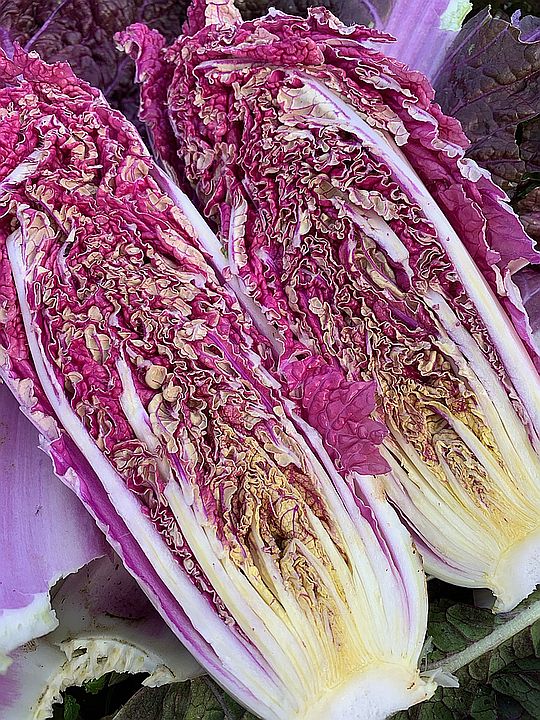Proof that our soil is getting better

Earlier this year we had our soil tested. I walked around the garden with a trowel and some quart freezer bags, and scooped up soil from various spots, and sent off five separate samples from our crop field. It had been a shameful four years since our last soil test, and there were some surprises in the results. Most notably, we had increased our soil organic matter by over 1%!
One percent, you may be thinking, that doesn’t sound very impressive. Think again! Increasing soil organic matter is no easy task. Consider the following from The Noble Research Institute (emphasis added):
“An acre of soil measured to a depth of 6 inches weighs approximately 2,000,000 pounds, which means that 1 percent organic matter in the soil would weigh about 20,000 pounds per acre. Remember that it takes at least 10 pounds of organic material to decompose to 1 pound of organic matter, so it takes at least 200,000 pounds (100 tons) of organic material applied or returned to the soil to add 1 percent stable organic matter under favorable conditions.”
Our crop field covers five acres. By applying compost, and tilling in cover crops and vegetable crops, we have added somewhere around 500 tons of material to the soil. Previously, our soil organic matter was around 1.3%. Now it averages 2.5%. Even though we have very nearly doubled our organic matter, there is still have a long way to go. Soils like ours that have a lot of silt and clay need more organic matter than sandier soils in order to function well. A ideal range for soil organic matter that gets thrown around a lot is 5-7%, but in reality it is different for every soil. Let’s just settle for more is better.
I will spare you a discussion here of why soil organic matter is important. If you are interested in reading more, this article from SARE is a great place to start.
We are sequestering carbon
Organic matter is carbon. Specifically, it is atmospheric carbon. Using energy from the sun, plants take carbon from the air and through photosynthesis transform that carbon, along with water from the soil, into sugars. You bet our farm is solar powered! The sugars that plants synthesize contain the carbon that is the basis for all of us carbon based life forms on the planet. When plants die, most of that carbon is released through decomposition but some (about 10%) remains in the soil to form stable humic compounds. Voila! Carbon sequestration in action!
Because I am a science nerd, I wanted to know how much carbon dioxide we have removed from the atmosphere and sequestered in our soil as the result of our farming practices over the past four years. Surely there is a simple online calculator to estimate this, right? Not that I could find. Good thing it is a cold morning and I have a little time on my hands, because I really went down the rabbit hole with this one
The nerdy math bit
Two and a half percent of our soil is organic matter, but 2.5% of what? How much does an acre of soil weigh? According to the USDA’s Natural Resource Conservation Service, the bulk density of an “ideal” silt loam is 1.33 grams per cubic centimeter. I’m not sure how “ideal” our silt loam is, but that’s a starting place. That is 83 pounds of soil per cubic foot. An acre is 43,560 square feet, and we are concerned with the top six inches, so that is 21,780 cubic feet of soil. Multiply that by the bulk density and you have 1,807,740 pounds of soil in one acre to the depth of six inches. (I suppose I could have saved myself all that work and just taken the 2,000,000 pound figure from the quote above, but that would have been too easy.) So each acre of our crop field has somewhere around 45,200 to 50,000 pounds of organic matter in the top six inches. About 12 tons of that is the 1.2% increase since our last soil test.
Now I need to know that 58 percent of the weight of soil organic matter is actually carbon. Thankfully, this was an easy number to find (also from the USDA NRCS). A molecule of carbon dioxide weighs more than a carbon atom, so to get from carbon to carbon dioxide I multiplied by 3.67 (atomic weights and all that. Don’t worry, I looked it up. I don’t actually remember 10th grade chemistry).
Building organic matter is a win-win
By increasing our soil organic matter by 1.2% in the past four years, we’ve sequestered roughly 25 tons of atmospheric carbon dioxide per acre, or 150 tons in total.
While this is interesting and worthy of celebrating, it is a bit besides the point to us as farmers. Our real objective is building organic matter. That is what makes for healthier soil and great vegetables. What is good for the earth is also good for our farm. It is incredibly gratifying to have these soil test results to confirm what we have already observed – the health of the soil is improving under our stewardship.
Small Shares
- Fennel
- Red Dragon Napa Cabbage
- Rainbow Carrots
- Sweet Potato
- Curly Kale
- Green Tomatoes
Full Shares
- Fennel
- Red Dragon Napa Cabbage
- Rainbow Carrots
- Sweet Potato
- Purple Top Turnips
- Green and Red Tomatoes




You must be logged in to post a comment.